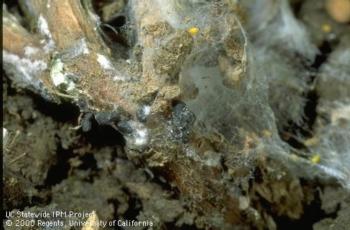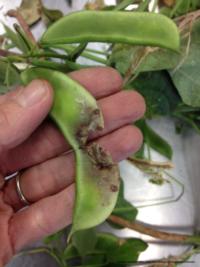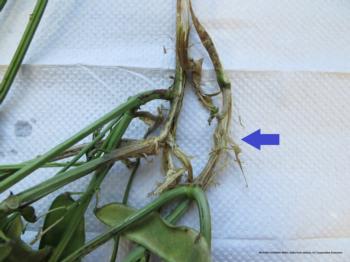
UCCE Farm Advisor
(209) 953-6120
mmleinfeldermiles@ucanr.edu

UCCE Farm Advisor
Field Crops, Pest Management
(530) 666-8734
rflong@ucanr.edu

Assistant CE AdvisorAdvisor
Agronomic Cropping Systems
(559) 852-2744
neclark@ucanr.edu
California Dry Bean Advisory Board provides funding for much of the research reported on this site. We appreciate their continued support.
White Mold in Lima Beans


What we can hope is that the disease won't appear on more plants in the next two weeks because there are really no management strategies at this stage in the game. The grower needs to think about how to manage this disease in the future, and rotating out of beans to a non-host crop (like small grains or corn) is probably a good strategy.
Weeds around the field can still harbor the disease, and the hard, black sclerotia can survive in the field for several years. If the grower plants beans again, then it is important not to over-apply nitrogen, which can result in an excessive canopy, limiting air movement.


